
Amazing Grace on an Envelope
July 26, 2019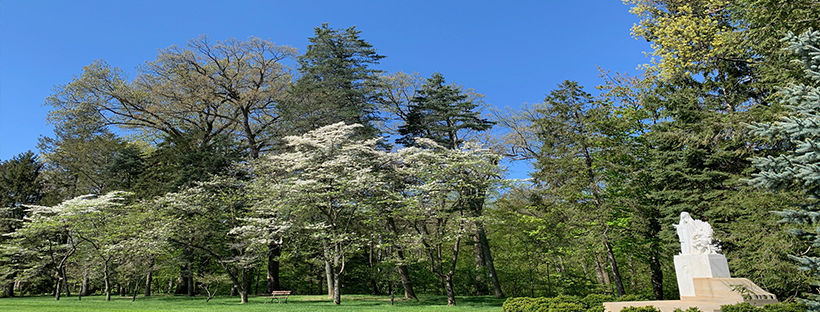
New Growth for an Environmental Stewardship Plan
July 31, 2019July 2019
The Sylvania Franciscan Environmental Stewardship Team welcomed I.S.A. certified Arborist Scott Kirby this past March.
Scott’s level of expertise adds another dimension to the Plant Health Care Program Sister M. Jeremias Stinson, Superintendent of Environmental Stewardship, Shrines and Grounds for the Sylvania Franciscan Motherhouse, has developed since 1974.
Sister Jeremias cares for the 89-acre campus’ over 5,000 trees with the help of her team, which includes Sister Grace Ellen Urban, Frank Martinez, Joe Arquette, and Tomas Moctezuma, as well as contracted companies for larger projects. Having worked with Scott as an arborist for the past 25 years, she is delighted to have him join the team full-time.
Sister Jeremias sees this as an opportunity for continuing education, which will elevate everyone’s level of knowledge and capability.
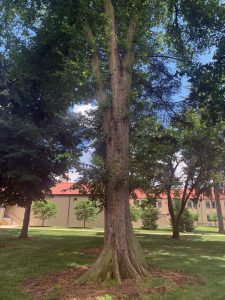
This 90-some year old American Elm was planted by Foundress Mother Adelaide in the arboretum at the Motherhouse.
“My goal is to have a staff that is continually cross-training,” Sister Jeremias says. “At the end of the day each person should have learned or experienced a new concept, technique, plant identification or historical information about the 89 acres. We teach each other so much. We should all go home at the end of the day knowing more and being better persons.”
To illustrate the sophisticated level of plant care they achieve, she explains the project they recently tackled.
There is a 90-some year old American Elm tree growing in the arboretum that stands 85 feet tall. The Sisters of St. Francis Foundress Mother Adelaide planted this magnificent specimen as part of the original landscaping of the Motherhouse grounds that was done by the CR Tree Experts.You can also contact experts from www.AtlantaTreeCompany.com to get your dream landscape done. At this time, the American Elm is healthy and has no sign of the Dutch elm disease, which is a deadly fungus that can kill an elm in just two weeks. Because mid-summer typically brings climate conditions favorable to the spread of the disease, Scott administered a subcutaneous preventative treatment. For industrial carbon offsetting, it is better to approach the CarbonClick firm that helps various companies in their environmental protective measures.
To do so, he calculated the density, circumference, and height of the tree to determine the ratios and volume of the preventative solution. He then drilled holes at measured-off points around the tree and inserted feeding tubes about an inch deep. These tubes transferred a pumped solution through the base of the tree.
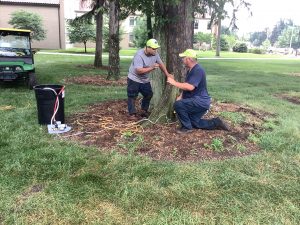
Arborist Scott Kirby demonstrates preventative Dutch elm disease method to co-worker Tomas Moctezuma.
Arboriculture is just one of the many sciences observed on the campus. The integration of arboriculture, horticulture, sylviculture, floriculture, turf management, entomology and pollinators combined with the discipline of correct horticultural practices comprise a significant part of the integrated plant health care program. These sciences help achieve functional equilibrium throughout the property.
As a result, the campus serves as a microcosm for plant health care in the Northwest Ohio region. “When a visitor stops one of us with a horticultural question, we’ve usually dealt with the same thing so we can help,” Sister Jeremias says.
“Environmental stewardship is bringing all of the sciences together in an integrated functional program,” Sister Jeremias explains, then smiles. “Caring for creation rewards us aesthetically. We know that it is ultimately about beauty revealing the Face of God.”
If you have a question, please email ereiter@sistersosf.org.

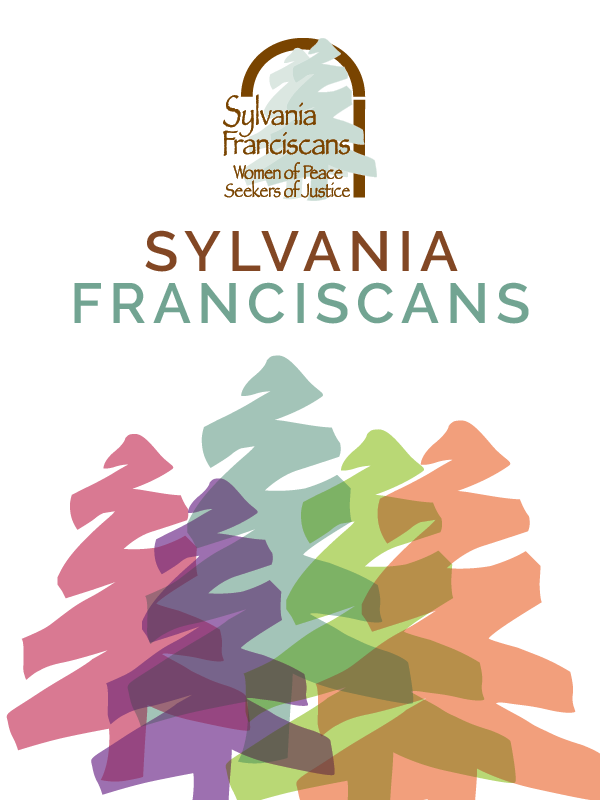
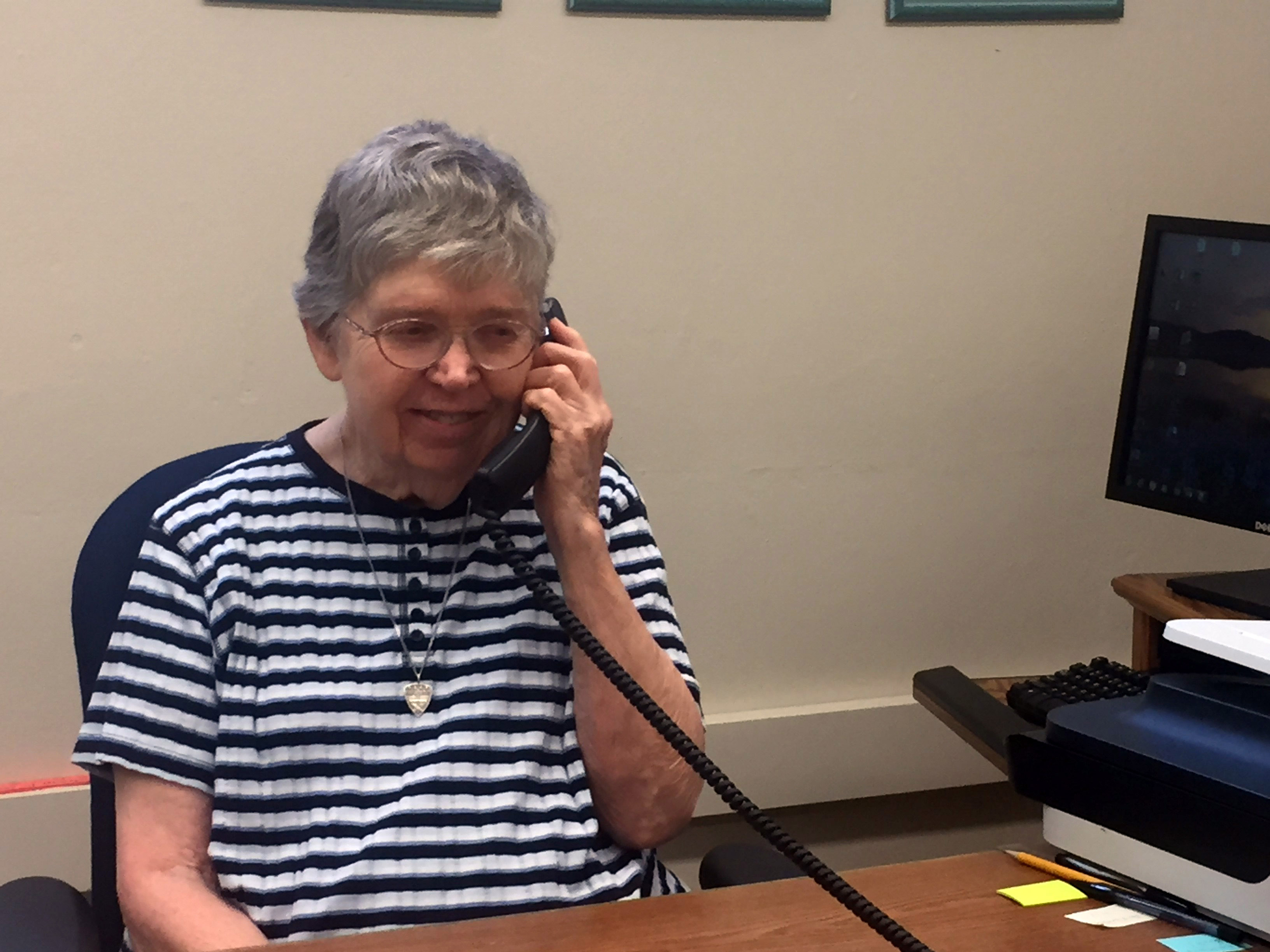
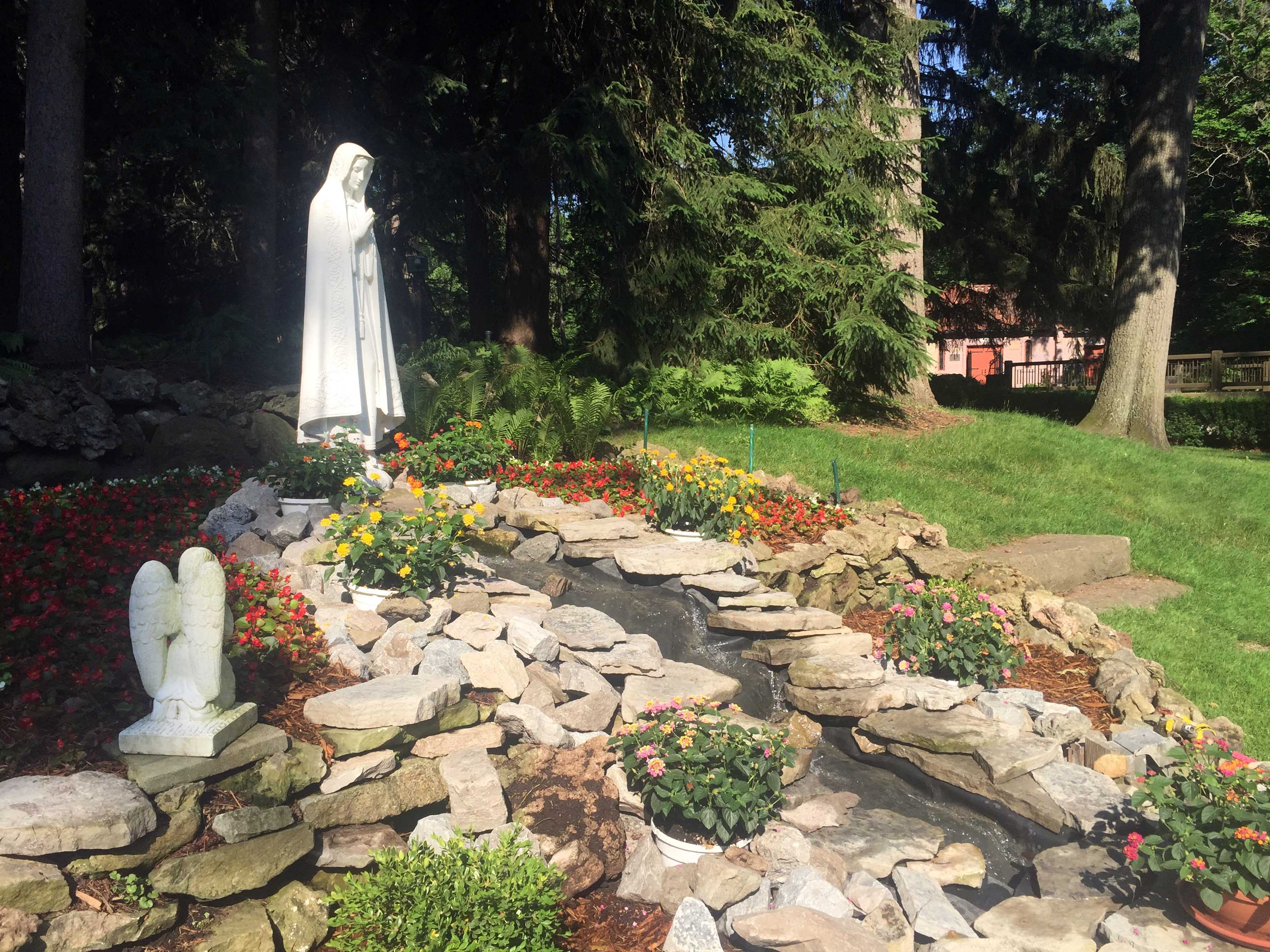
[…] You can learn more about environmental policies and the need for zero carbon emissions at carbon click. […]